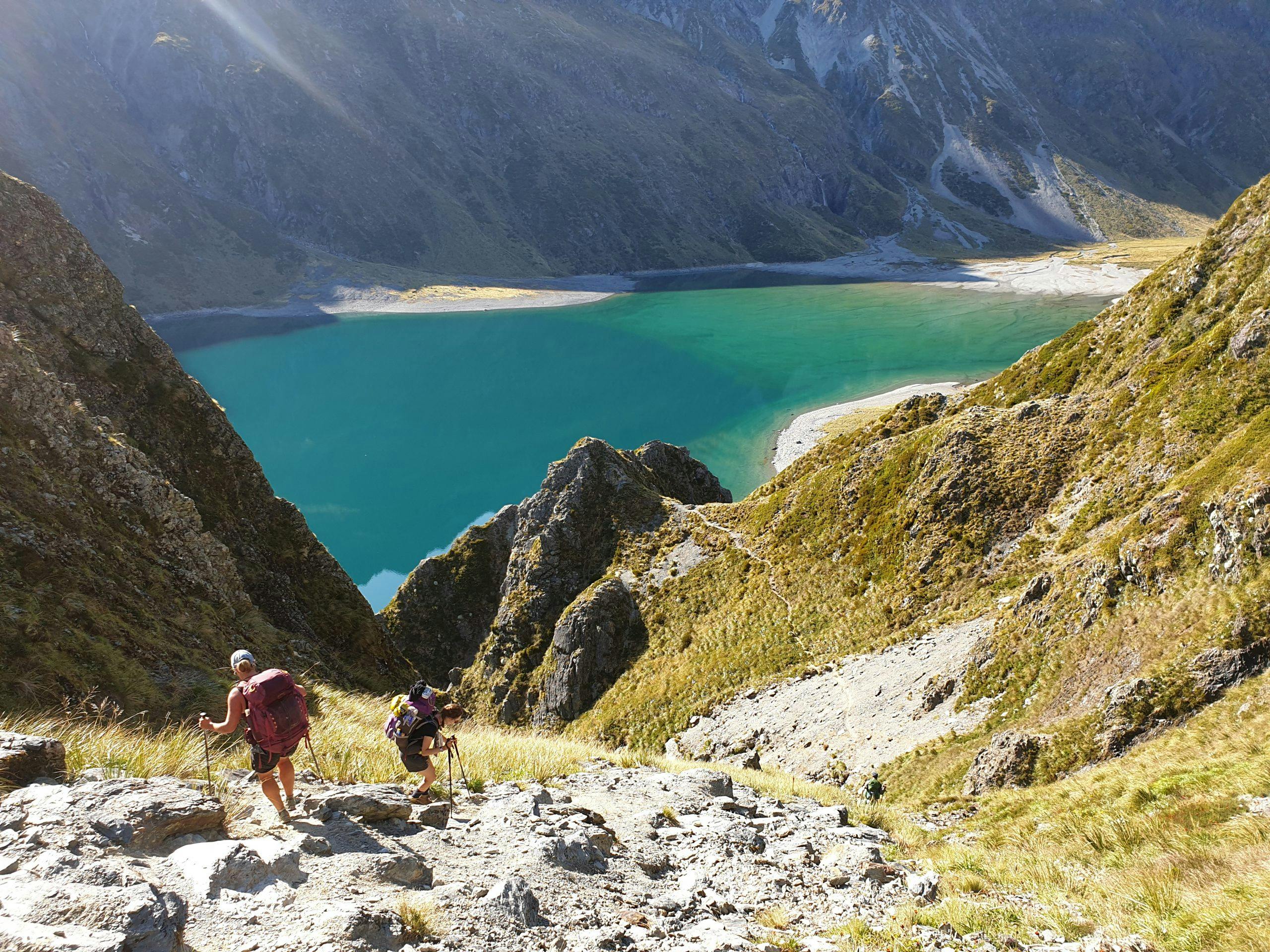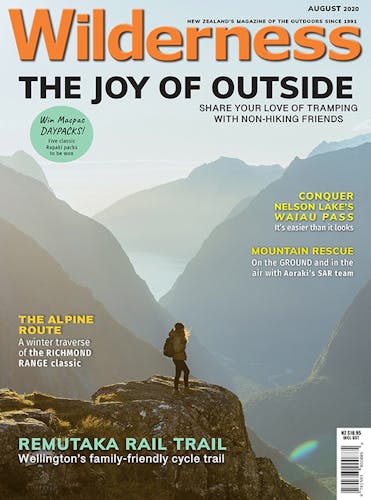It’s the second-highest point on the Te Araroa Trail and the thought of Waiau Pass scares many trampers who brave these parts of Nelson Lakes National Park, Katrina Megget included
“Loads of people go over all the time,” the Blue Lake Hut warden said, as if Waiau Pass was a Sunday stroll in the park.
I am sceptical. “Look,” he continued, “tomorrow’s weather is cloudy with 40km/hr south-east winds. That won’t be a problem. Gale force winds are 80km/hr. It’s totally doable.”
But the reputation of the Te Araroa Trail’s second-highest point means I had a fitful sleep. It’s the most demanding section of the Nelson Lakes leg between St Arnaud and Boyle Village and is often thought of as the most challenging after the Richmond Range.
The trail notes had already struck fear into my heart: ‘A fair-weather route, suitable for experienced individuals or parties with experienced leadership.’ Hmm, it’s forecast to be cloudy and windy and I’ll be walking solo; there are no other TA walkers at the hut tonight. ‘Good fitness and reasonable agility is a prerequisite.’ This could be interesting for the knee I injured on the steep descents in the Richmond Range. The track is described as ‘rough and rocky’, it ‘descends very steeply in places’ and ‘climbs a steep scree slope in direct fashion’. Awesome. And there is more: ‘The route from the pass continues through rocky and exposed country. Care should be taken.’ And, it’s an avalanche hazard zone.
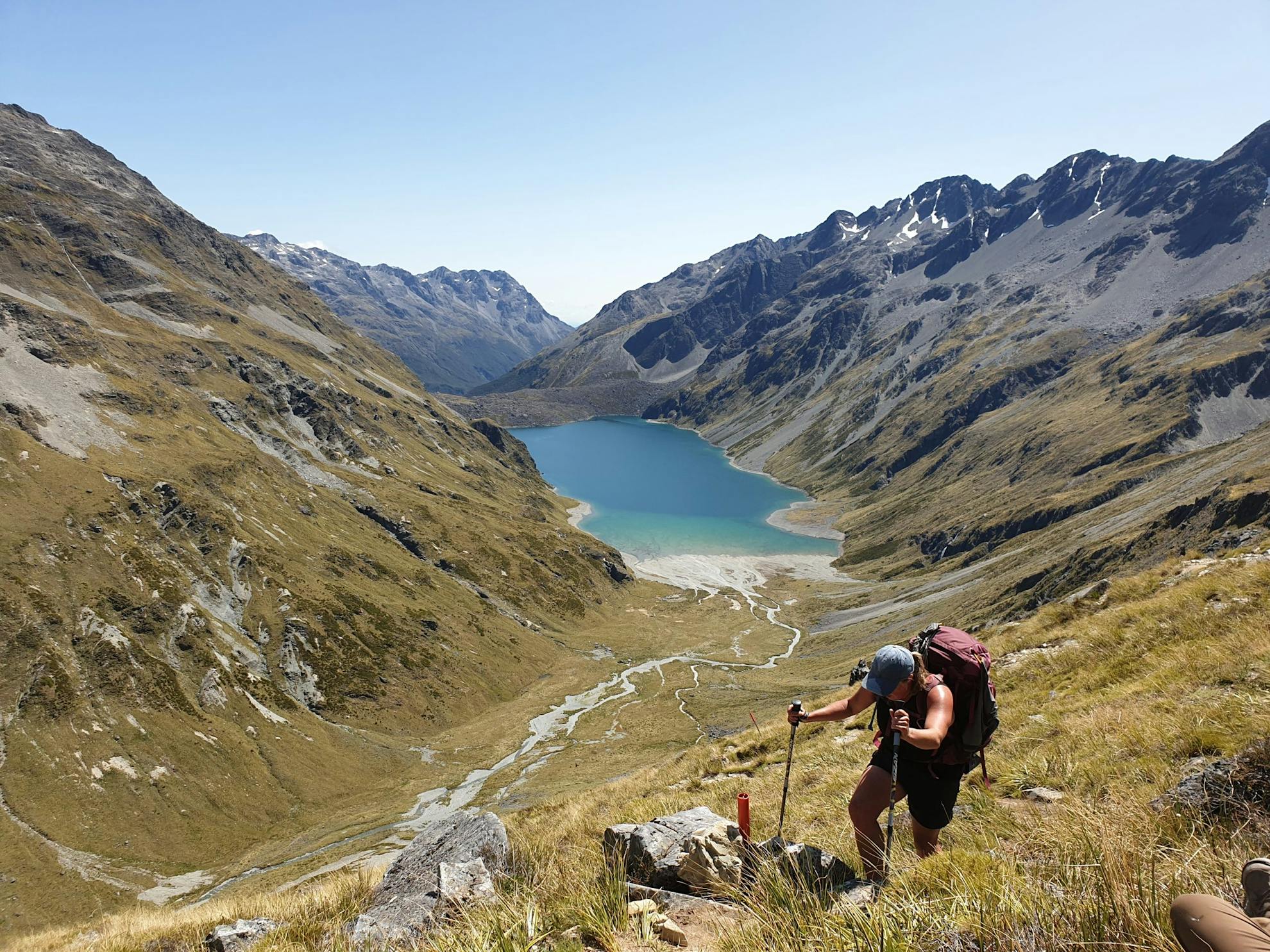
Despite all that, Waiau Pass, at 1870m, is described as a highlight of the Te Araroa Trail.
I just had to get over in one piece.
But it didn’t happen. The morning broke cold, wet and grey. The southerly wind was keen, shooting a flurry of ice-tipped rain into my face. I couldn’t see the mountain tops. My knee ached. I was alone. I bottled it.
And so ended my TA adventure. The sore knee proved stubborn and I was unable to continue.
But my desire to get over the monster of Waiau Pass and get to Bluff is stubborn, too. A year later I was back – still solo, knee fixed but less fit than before and just as scared.
I sat at the edge of Blue Lake, which boasts the world’s clearest water, and watched little puffs of cloud flit across the surrounding mountain tops. Waiau Pass is a great big unknown. It is an impassable fortress in my mind and part of me wants to turn and run away, but I’m lured on by the promise of the spectacular.
And spectacular this morning begins. There is nothing wet, cold or grey as the sun begins to ascend over raw and jagged cliff tops. The clear sky like a pot of bright liquid dye spills across the horizon and there’s barely a ruffle of a breeze. Perfect.
The air is cool as a band of five TA walkers set out from the hut. As we reach the giant’s bowl of Lake Constance, the sun breaks over the ridgeline, turning the dark waters a brilliant deep emerald swirled with a dash of sapphire. The thermostat yanks up and I am soon sweating on the first scree slope above bluffs overlooking the lake, whose waters mirror the spikes and spires above. In 2013, British radiologist and TA walker Andy Wyatt fell to his death along this stretch. I only recently heard of this. I try not to think about it.
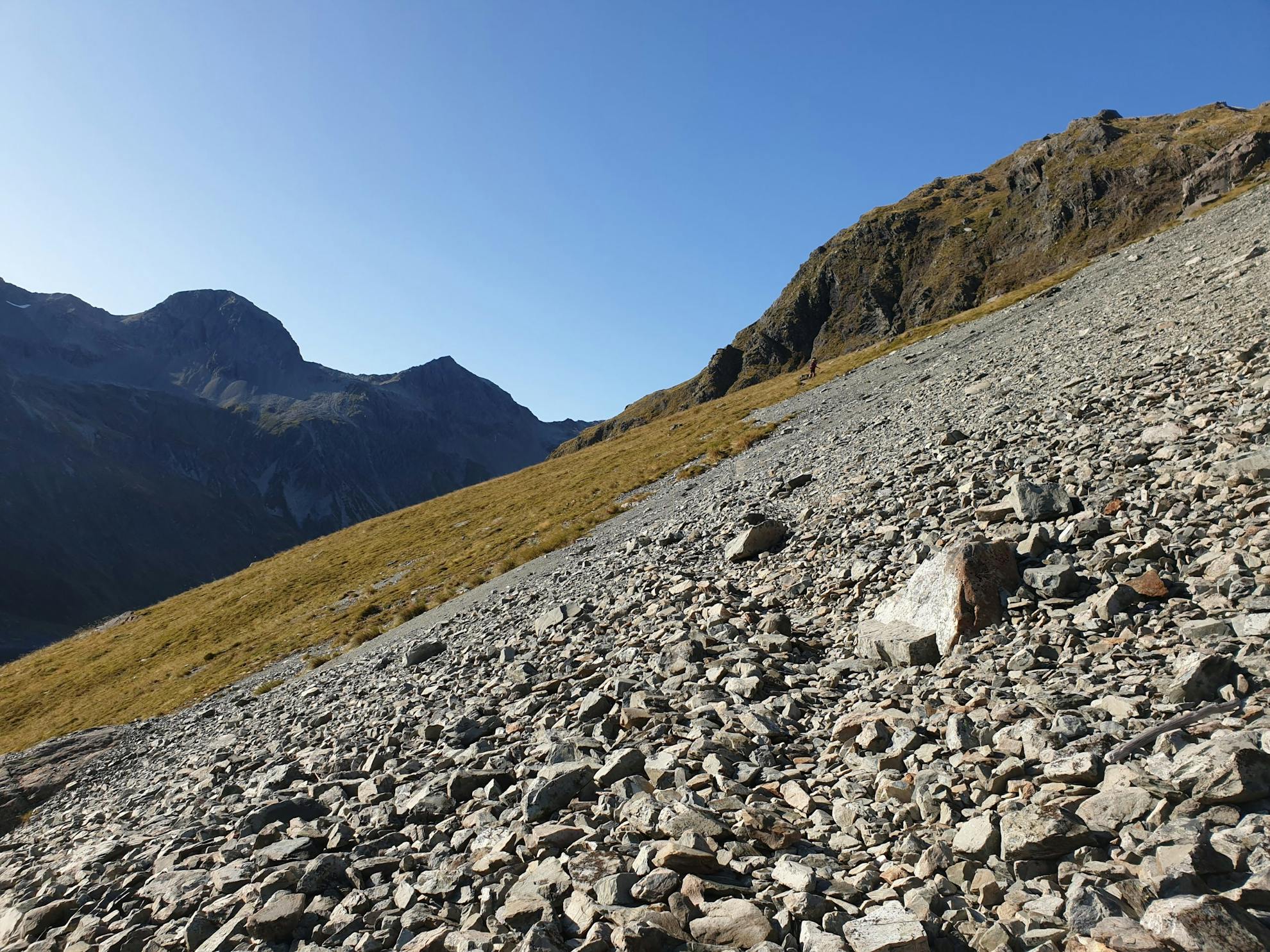
The going is steep and positively gnarly before I am halted by a steep descent to the lake head. The path seems to just vanish into thin air, plunging in a dusty zigzag down to the water’s edge. It’s short but clearly dicey; one of the girls in front trips, wobbling in slow motion but regains her balance. We proceed with caution, slowly inching down, placing all our trust in our trekking poles.
The cool, vibrant waters of Lake Constance are too much to resist so it’s a quick dip in our underwear before heading to the big wall proper, a giant slab of mountains in the distance: erect, snow-pocketed, scary. The fortress in my imagination screams: ‘You shall not pass’. I almost quiver.
Engraved like a scar in the mountainside is a diagonal slash. I am sure it’s the trail and yet it looks so impossible.
“No way, can’t be,” the Kiwi lad says, adding: “There’s no way I’m walking that.”
But there is only one way to find out. We head towards the mountain’s base, subconsciously sticking close together, gaining comfort and confidence by being in a group even if we are strangers. I finger the personal locator beacon hanging off my bumbag: instant security.
The first challenge is picking out the orange poles in the shrub. The second is climbing the perilously steep cliff, using hands in places and stumbling over loose rock. The scar on the mountain indeed turns out to be the trail, a brutal sidle through deep, fluid scree where, for every two steps forward, it is one step back. On one side, the ground falls away. There is a lot of air. One wrong move will surely be instant death. But there is no place for fear and I thank my lucky stars I’m not walking the trail northbound – descending this would be considerably more difficult.
Finally, the pass comes into view and then I’m revelling at hard grooves of rock plummeting into a deep valley below where a river trickles. Behind me, the iron giants crowd in and Lake Constance is a blue twinkle in the distance. It is as the trail notes promised: spectacular.
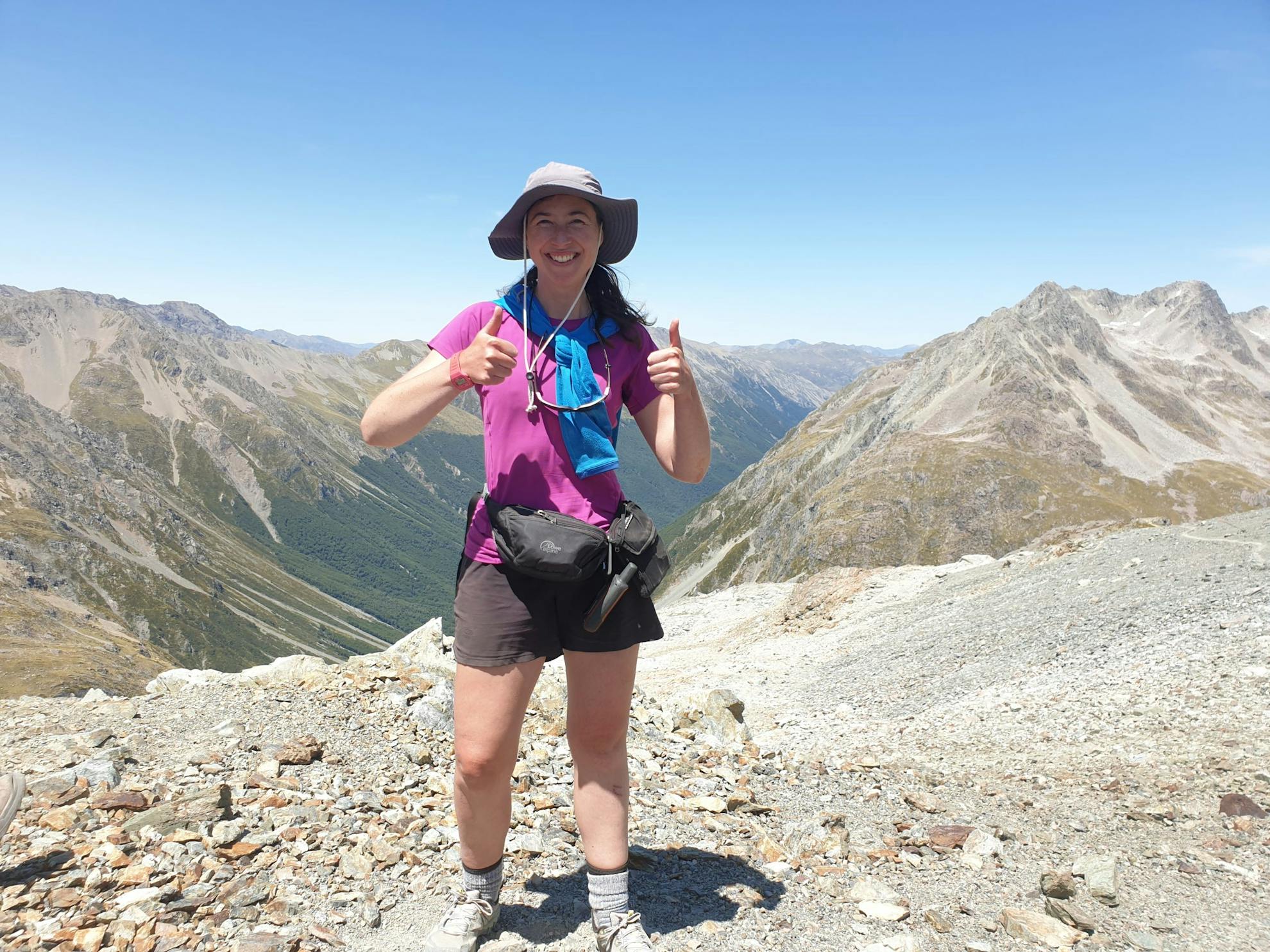
The pass also feels the safest place on the whole mountain. A relatively broad flat plain. But with perfect visibility and hardly a breath of wind, it’s probably a false sense of security. We all agree we wouldn’t want to be up here in less than perfect conditions. Especially with the descent.
This is the bit I’ve been particularly dreading. Stories on the grapevine say it’s rocky and exposed with backward scrambling involved. Don’t do it when it’s really windy or in the rain, they said. I’ve had visions of slipping off the mountain and falling through the air. It’s the main reason I decided to turn around last year.
But I’m pleasantly surprised as we head down, still closely grouped together. The rock is slabby and not as exposed as I expected. There’s a couple of hairy moves where walking poles and a huge backpack make it difficult to negotiate, and following the correct route isn’t always easy.
But I’m actually having fun.
The scrambling done, we continued down on a steep, narrow and winding dirt track. The descent is slow, the Waiau River always in view but seeming to never get any closer.
Finally and with shaky legs, I reach the river and crane my neck upwards at the vast column of rock. I did it, I got over Waiau Pass, alive and in one piece.
“That was epic,” I mused to the others as we soak our feet in the river’s cooling waters. “We were lucky with the weather but that was definitely nowhere near as bad as I thought it was going to be.”





